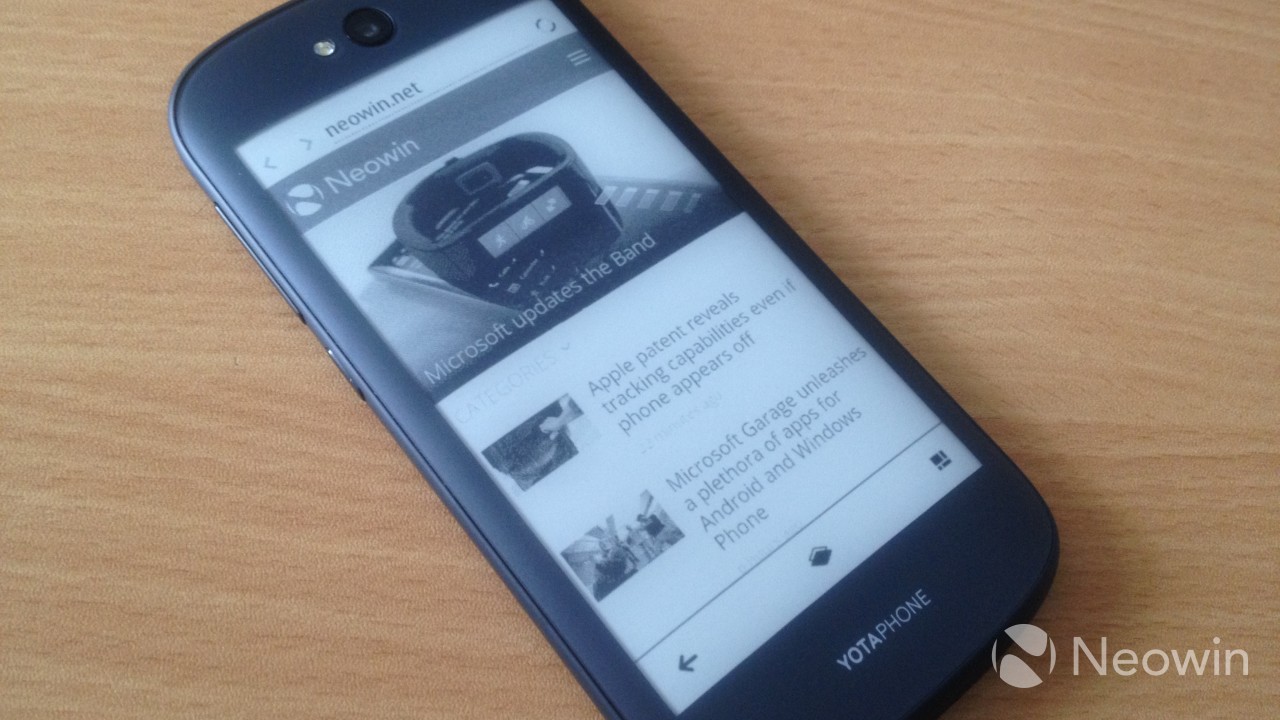Yota started off as a Russian mobile broadband provider and slowly began producing various pieces of hardware including smartphones. What really brought their attention to the rest of the world, however, was in 2013 when they demoed the original YotaPhone prototype at MWC 2013. They've since produced the YotaPhone 2, a unique handset proposition which adds a second touch-sensitive e-ink display on the back of the phone.
The YotaPhone 2 measures in at 145mm x 69.4mm and it's 9mm at it's thickest point. It definitely doesn't feel 9mm at all though - the back of the phone curves off towards the edges making the phone feel very natural to hold. In fact, the entire device - barring the front display - has some sort of curve to it. It weighs in at a total of 145g (a little bit over 5 ounces) and features a 5" front display. Throughout this review I'll be referring to "front" and "rear" displays, because if it isn't already clear, this smartphone has displays on both the front and back. The rear display measures in at 4.7" inches. The rear color of the smartphone is a similar grey to that of the e-Ink display letting the rear display blend very naturally with the rest of the phone.
The front of the phone has no marks at all barring the front camera and speaker grill. The speaker grill has a horizontal oblong shape. Moving to the rear of the phone, it is also largely free of marks and completely smooth. There is a rear camera, a flash, and a small mark at the bottom identifying the phone as a YotaPhone. Aside from the aforementioned, there are no other marks, shapes or breaks on the front and rear panels of the smartphone, which makes it feel extremely luxurious. If Apple designed an Android phone, this would be it.
Moving on to the edges of the smartphone, there is a 3.5mm headphone jack at the top, a volume rocker and power button on the left, and a speaker, microphone and mini-USB slot at the bottom. That's it. There are no other holes, no other buttons, nothing else around the phone. The SIM card is inserted inside the volume rocker - you literally eject the volume rocker with a small pin and place the SIM-card in the attached tray - and there is no expandable memory slot or a way to remove the 'back cover.' In essence there is no back cover - the back cover is a screen.
